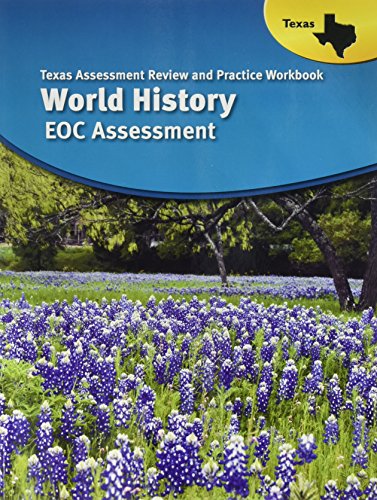World History I Ch.7 An Age Of Giant Empires
World History I Chapter 7, An Age of Giant Empires, explores the rise and fall of some of the largest and most influential empires in history. This chapter looks at the different empires, their rulers, their legacies, and the impact they had on the world. From the Chinese Qin Dynasty to the British Empire, this chapter looks at how and why these empires rose to power and how their rule changed the landscape of the world. Special attention is given to the effects that these empires had on the cultures and societies of the lands that they ruled over. This chapter is a great resource for anyone interested in learning more about the history of giant empires.
Rise of the Persian Empire
The rise of the Persian Empire is an incredible story of how a small kingdom transformed into a world superpower in the sixth century BCE. The Achaemenid Empire was one of the largest empires in ancient history, stretching from the Mediterranean to the Indus River in the east. The Achaemenids were the first to establish a unified government, creating a system of roads, post and communication that united the empire. The Achaemenids also developed a code of laws, a form of taxation and a system of slavery that was maintained throughout the empire. Furthermore, the Achaemenids were the first to introduce a universal language, Aramaic, which was the lingua franca of the entire empire and served to unify its diverse population. The Persian Empire was a powerful force in the ancient world and its legacy can still be felt in the Middle East today.
Expansion of the Persian Empire
The Persian Empire, lasting from 550-330 BCE, was one of the largest in the ancient world. At its height, it stretched from the Mediterranean Sea to the Indus River, covering much of modern-day Iran, Iraq, Turkey, Egypt, Libya, and Pakistan. During this period, the Persian Empire underwent rapid expansion, with Cyrus the Great and Darius the Great leading the way.
The Persians used military force to conquer lands, and they also relied on their diplomatic acumen to bring new regions into their fold. They used a combination of tactics, both bribery and coercion, to get people to join their empire. This strategy was very successful, and the Persian Empire soon became one of the largest in the world.
The Persians also adopted an administrative system to govern their new territories. They divided the empire into satrapies, or provinces, and put governors in charge of each of them. To make sure that their governors were loyal, they had to send yearly payments to the Persian king. This helped to keep the empire unified and strong.
The expansion of the Persian Empire was key in shaping the history of the region. It was the first great empire in the ancient world and set the stage for the later empires of Greece and Rome. It was also an important cultural force, introducing new ideas and customs to the region. To this day, its influence can be seen in the region’s customs and art.
Greek Resistance to Persian Rule
The ancient Greek city-states faced a formidable enemy in the form of the Persian Empire, which sought to conquer and control them. The Greeks, however, rose up and resisted the Persian forces in a series of battles that would go down in history as the Greco-Persian Wars. This conflict began in 499 BC and would last until 449 BC, with the Greeks eventually emerging victorious. During the course of the wars, the Greeks managed to successfully repel the Persian invasion, defeating them in battles such as the Battle of Marathon and the Battle of Salamis. Despite the odds stacked against them, the Greeks managed to hold off the Persians and maintain their independence. The Greco-Persian Wars not only witnessed the Greeks’ heroic resistance to the Persian Empire but also served to shape the early history of the Mediterranean world. The victory in these wars would have a profound impact on the Greeks, and their legacy would continue to inspire generations of warriors. This chapter of World History I examines the significance of the Greco-Persian Wars, exploring the causes of the conflict, the strategies employed by the Greeks, and the legacy of the wars. It also considers the broader implications of this conflict for the development of Greek culture and the Mediterranean world.

The Fall of the Persian Empire
In ancient times, the Persian Empire was a major superpower, stretching from modern-day Iran to Egypt and from Greece to India. But by 330 BC, its vastness had made it weak and vulnerable to the Macedonian King Alexander the Great. In short order, Alexander the Great destroyed the Persian Empire and ushered in a new period of history.
The fall of the Persian Empire meant a massive shift in power, with Alexander the Great taking full control of the region. He established a new political system, one with a strong central government and a common language and culture. He also spread the Greek language and culture throughout the region, a legacy that survives to this day.
The fall of the Persian Empire also meant a shift in religious beliefs, as Alexander the Great embraced the Greek gods and goddesses. He also introduced the concept of monotheism to the region, paving the way for the rise of Christianity and later Islam.
The fall of the Persian Empire had a lasting impact on the region, creating a new political and religious landscape. Its legacy is still felt today, and its impact on world history can be seen in the rise of major world religions and the spread of Greco-Roman culture.
The Macedonian Conquest of the Persian Empire
From the ancient empires of the Egyptians and Babylonians to the modern superpowers of today, the rise and fall of empires has been a defining feature of human history. This is especially true in the age of giant empires, as exemplified by the Macedonian conquest of the Persian Empire. Under the leadership of Alexander the Great, the Macedonian army conquered the Persian Empire in a series of decisive battles. This remarkable feat was achieved through a combination of brilliant military strategy, tactical superiority, and sheer courage.
Alexander’s tactics were based on speed and surprise, utilizing his cavalry to harry the Persian forces while his infantry pounded them with arrows and spears. At the Battle of Gaugamela, the Macedonians’ superior tactics and maneuverability allowed them to outmaneuver and overwhelm the Persian forces. Alexander’s boldness and ambition ultimately allowed him to defeat the Persian Empire and become one of the most powerful rulers of the ancient world.
Through this conquest, Alexander the Great created an empire that stretched from Greece to India, and his legacy still resonates today. The Macedonian conquest of the Persian Empire serves as a reminder of the power of strategic leadership and courage in the face of overwhelming odds. It also stands as a testament to the ever-changing nature of empires, and the importance of adapting to the changing dynamics of a world in flux.
Legacy of the Persian Empire
The Persian Empire was one of the world’s oldest and most influential empires. It lasted from 550 BCE to 330 BCE and spanned three continents. Under the rule of Cyrus the Great, the Persian Empire created a government system that allowed diverse people to live in harmony, and it also established a single language and currency, making trade easier.
Additionally, the Persians introduced the concept of a universal law code, as well as the idea of a centralized government. This system allowed for the free flow of ideas and goods across the empire, which was beneficial for its people.
The Persian Empire also had a significant impact on other aspects of the world, such as art and literature. Their influence can be seen in the works of Homer, Plato, and Aristotle. They also left their mark on architecture, introducing the use of columns and arches.
The Persian Empire was a powerful and influential force in the ancient world. Its legacy is still felt today in the form of art, literature, and political systems. Its influence was so far-reaching, that it was said to have “shaped the course of human history.”
FAQs About the World History I Ch.7 An Age Of Giant Empires
Q1: What were the three major empires in the age of giant empires?
A1: The three major empires during this period were the Persian Empire, the Mauryan Empire, and the Han Dynasty.
Q2: What was the Zoroastrian religion?
A2: Zoroastrianism was a religion founded by the ancient Persian prophet Zoroaster. It espoused dualism between two primordial spirits, Ahura Mazda and Angra Mainyu, and is considered to be one of the oldest monotheistic religions.
Q3: What was the Silk Road?
A3: The Silk Road was an ancient network of trade routes connecting the East and West. It stretched from China, the Middle East, and India, and facilitated the exchange of goods, ideas, and culture between these places.
Conclusion
In conclusion, the chapter on An Age of Giant Empires in World History I shows that the era was marked by vast and powerful empires that spanned much of the known world. These empires were built on the backs of powerful armies and religious structures, and their successes and failures often determined the course of history. Through the rise and fall of these empires, the world has seen many great and powerful civilizations and cultures come and go. The legacy left behind by these giant empires has shaped the world we live in today.

